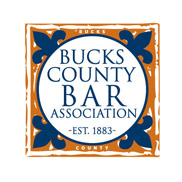Is the income tax the new estate tax? Rethinking estate tax planning
By: PETER REISS, ESQ
With the increase in the federal estate tax exemption to $5.25 million ($10.5 million for a married couple), fewer taxpayers are concerned about the 40% tax rate. Income tax rates have increased, though, to a maximum rate of 39.6%. Add the new “unearned income medicare contribution tax” of 3.8% to that and you get a maximum federal income tax rate of 43.4%. Add the 3.07% state income tax rate in PA to reach a 46.47% rate. In New York, the income tax rate can easily top 50%.
Capital gains rates are also increased, to a maximum of 20% for those in the top income tax brackets. The capital gains tax rates on collectibles, though, such as coin collections or art, is 28%.
Taxpayers should be rethinking the goal of seeking to exclude assets from their taxable estates, since (i) fewer estates will be subject to the federal estate tax, and (ii) appreciated assets held in a decedent’s estate receive a “stepped-up” basis (to the date of death fair market value) in the hands of a beneficiary.
An extreme example: Decedent has a $4 million estate, including highly appreciated artwork. There is no federal estate tax. If the estate is left to the decedent’s children and/or grandchildren, the Pennsylvania Inheritance Tax rate is 4.5%. A painting worth $200,000 transferred to decedent’s child at decedent’s death will be taxed at 4.5%. Had the decedent, attempting to minimize her federal taxable estate, given the painting to her child prior to her death, the child would have a “carryover basis” in the painting for income tax purposes of the decedent’s cost — let’s say she purchased it many years ago for $10,000. When the child sells the painting, the capital gain of $190,000 would be subject to a 28% federal capital gains tax — the tax would be $53,200.00. The PA income tax on the sale would be an additional $5,833.00. Had the decedent kept the painting and transferred it to her child by will at her death, the inheritance tax on that asset would have been $9000.00 — a savings of just over $50,000.00. There is no income tax, either federal or state, on assets inherited from a decedent. And, unlike a bequest of stock, some of which could be sold to pay the tax, the beneficiary cannot sell a portion of the painting to pay the income tax. To make it worse, lets’s say the beneficiary’s liquid assets are held in retirement plans. If the painting has sentimental value — e.g., it’s been in the family for years and she wouldn’t dream of selling it — she would either have to borrow money to pay the tax or take money from her IRA or 401(k), resulting in more income tax on the withdrawal and, if the beneficiary is under 59 1/2, an additional 10% penalty tax on the withdrawal.
Taxpayers should be rethinking their estate planning to maximize the benefit of the (seemingly permanent) $5.25 million estate tax exclusion. This may involve undoing, to the extent possible, transfers made at the end of 2012. It certainly calls for review of existing wills and trusts that seek to keep assets out of the estate of the surviving spouse by forcing the funding of “bypass” trusts to the maximum amount that can be passed free of estate tax. Wills with “disclaimer” trusts are far more flexible and allow for “post-mortem estate planning” which can be far more effective in reducing overall taxes for the family.
Of course, every family’s situation is different and merits individual examination and analysis to arrive at the most appropriate use of the many tools available to reduce tax and accomplish the family’s goals.
This article is not legal advice and is provided for informational purposes only. Actual legal advice can only be provided after consultation by an attorney licensed in your jurisdiction.








